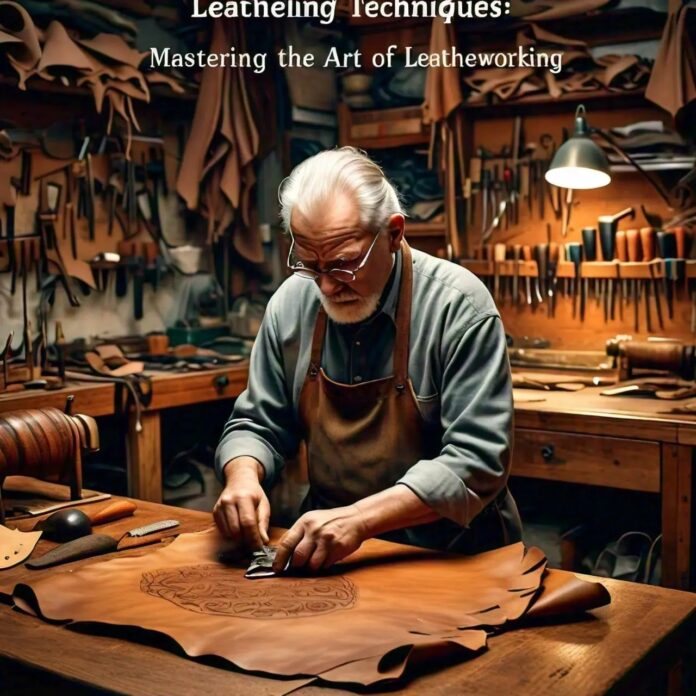Leatheling – Leatherworking whether as a dull craft or and as an artistic expression, is one of the most appealing crafts. This skill ranges from the creation of practical items to the most delicate and elaborate works of art. In both aspects;l leatheling skills are fundamental in the determining of the tight quality. This article will elaborate on the necessary leathling skills that are fundamental for mastering this craft.
Fundamentals Of Leatheling
Leatheling or leather crafting is the art of stitching animal skins. It is essential to know the core principles of any skill. A leather crafter uses animal skins with various variations Such types include full-grain leather, top-grain leather, and suede leathers Assist types have suitable features for various projects. Thus, before making any creations it is advisable to get acquainted with these types.
Starting Tools For Leather Working
For any crafting exercise, the right tools play a fundamental role. Thus, here are some necessary tools required by a leather worker:
- A Sharp Bladed Cutting Knife: A crafts person requires tools of varying blades to get clean cuts on leather, the a cutting mat will ensure that the workplace is put intact.
- Chisels For Stitching And Basic Hole Punchers: Tool are necessary for creating and punching holes which are essential features in stitching leather crafted items.
- Mallet: A rawhide or rubber mallet is used to strike the punches and tools so that they do not get damaged.
- Stitching Supplies: Needles, thread, wax, and hardware can help in the sewing of leather pieces.
- Edging Tools: Edge tools such as, burnishers, and bevelers are used in finishing edges of leather.
Basic Technique of Leathelming
1. Cutting
The first step of any Leathelming work is cutting out the required of leather precisely. Allow a straight edge to rest against the knife to make sure clean and straight cuts are made. For cuts into more dimensional shaped leather, cut out a piece of paper that has the outline of the desired shape and use it to trace cut out before actually cutting.
2. Punching Holes
Punching holes is one of the most important steps for stitching different leather parts. A standard rotary punch can be used to make the holes of a particular diameter or chiseling tool can be used to create more appealing holes. Center the holes of the patterns throughout the stitching for a decent outcome.
3. Stitching
Stitching is a technique widely used in Leathelming since it is employed for joining pieces together. Generally, saddle stitches are quite strong and are the most widely used stitch. The following are the steps in making a saddle stitch:
- Take one thread and insert two needles at the end of the thread.
- Pick one needle and insert it into one of the holes from one side, and pull it until the thread is even on both ends.
- Using the second needle, re insert it into one of the holes you started stitching and draw it out to complete a stitch round, pulling the stitch taut to mix the two threads.
- Continue alternating the sides until every hole is worked upon.
4. Edging
When leatherwork is finished, boiler and raw edges need to be worked this way too as it gives the ensemble a final touch, which is desirable. First and foremost, edges of leatherwork need to be beveled using an edge beveler before using boning or burnishing tools. Thereafter, this seals and smooths out the edges which enhances the overall appeal of your project.
5. Dyeing and Finishing
Dyeing leather opens up more options for adding a unique twist or depth to one’s projects. Use a good quality leather dye which can either be a spray or a cream and apply it evenly using a sponge or brushing on it. Once the dye has been applied, you can consider applying a leather finish or a leather conditioner for moisture protection and shielding from damages as well.
Advanced Leatheling Techniques
As long as you’ve understood the concept and basics of leather, you can try out advanced techniques such as:
- Tooling: When tool is employed for particular leather, decorative images can be made on leather, and such images can be made into various intricate patterns or textures to an unlimited extent.
- Lacing: Using a non-matching thread or lace for seams and edges decoratively, allows the lacework to become more appealing.
- Molding: Leather can be molded into three dimensional shapes by soaking it in water which encourages it soften, the newly molded leather can be useful in making bags and holsters among many things.
Conclusion
As with all journeys, the one of mastering leather crafting skills is one that carries the promise of a mix of fun and enthusiasm. There are several basic elements that one must master in order to be able to transform their visions into leather goods that are beautiful and stylish. For beginners or even experienced craftsmen who are planning to make leather wallets, purses or bags of any sort, this article will serve as a tool that helps one through the process of creating leather goods.
While it might take some time and perhaps a few tweaks here and there, bears repeating that, one can and should, through dedicated effort, turn our work with leather into pieces that are not only beautiful but also timeless in their utility and purpose. Embark your journey today and do not look back as the horizon of possibilities that leather offers is limitless!


